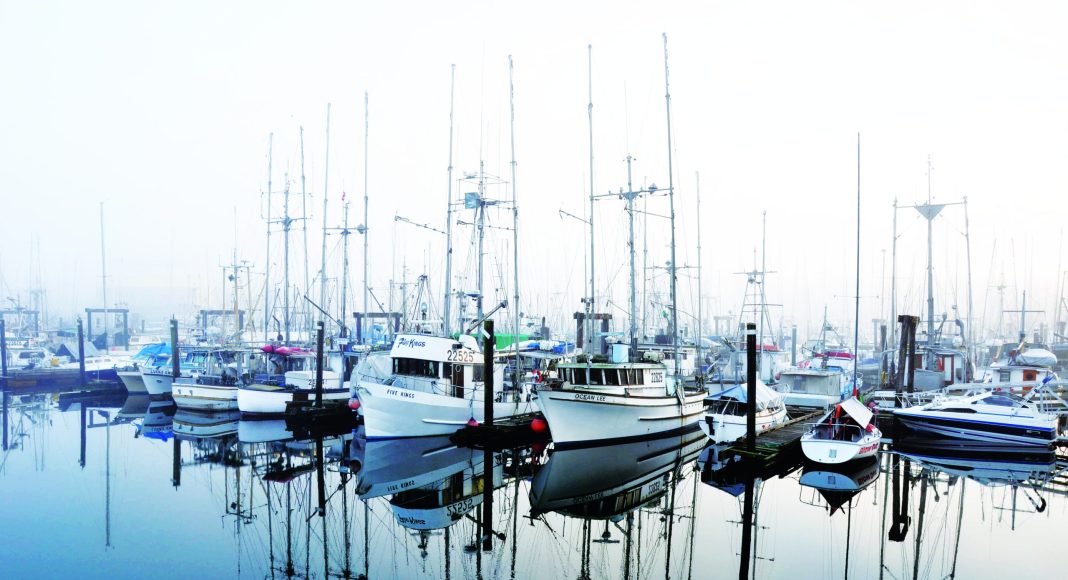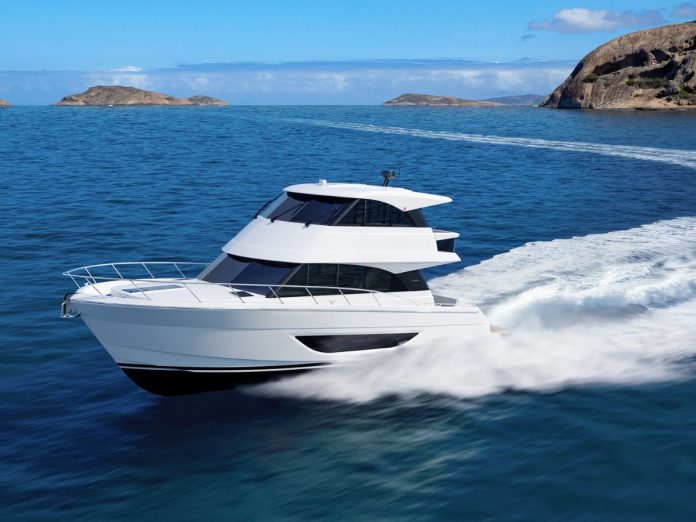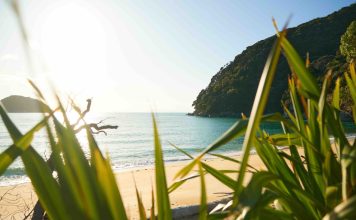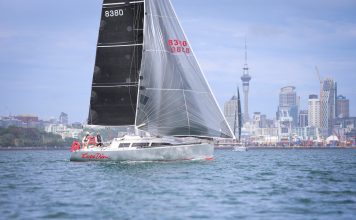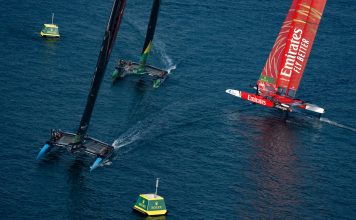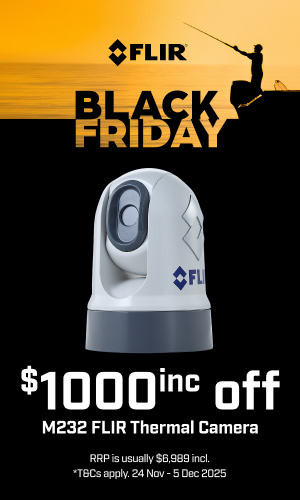Every year I attend major boat industry trade events like METSTRADE and technology showcases like CES to learn about emerging technologies to make boating more environmentally sustainable. While there’s always plenty to see, the big announcements invariably talk about achieving lower emissions one day, and reducing our ecological footprint at some point in the future.
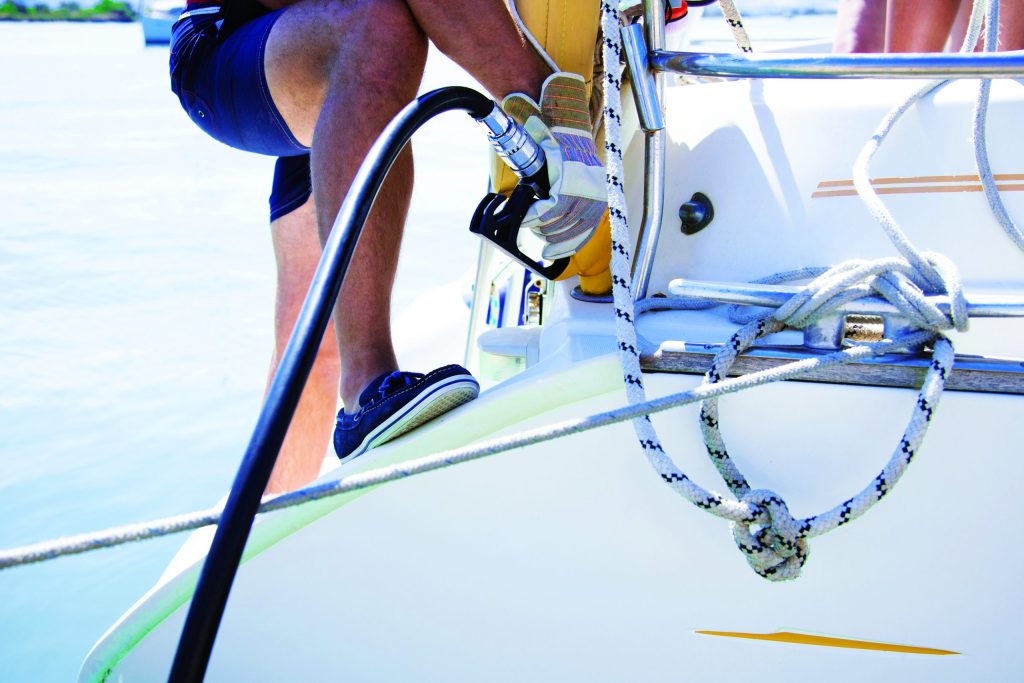
Stuff that man, I want to know what we boaties can do right now.
Plenty, it seems, and here’s just a sample of the kind of tech boat builders and service yards are using today to make boating more sustainable than ever.
Cutting fuel consumption
The easiest way we can all reduce our greenhouse gas footprint is to simply ease up on the throttle. Cutting back from full throttle to 75% doesn’t reduce a boat’s speed by much, but it can cut fuel consumption in half, according to major engine builders worldwide. Less fuel burned means fewer particulates finding their way into the atmosphere.
Beyond that, boaties can go one further by making their boats more slippery, since cutting drag leads to further fuel consumption and GHG emission gains. Auckland-based Propspeed designed its foul-release coatings to keep marine growths from accumulating on running gear. But it notes that one of the key environmental benefits of its product is that it allows vessels to immediately reduce greenhouse gas emissions through reduced fuel consumption.
In order to validate that claim, the firm recently collaborated with two Dutch firms – Stellendam, Netherlands-based shipyard Padmos BV, and Nieuwegein-based technology firm TechBinder – to perform controlled A-B testing of its product on a 38-metre commercial fishing vessel.
“In a nutshell Padmos said that if we could demonstrate a 4% fuel savings by using Propspeed, they would adopt it across their production and recommend it to their customers,” says Propspeed CEO, Marcus Hamilton. “For decades we have heard anecdotal reports that Propspeed has improved fuel economy for our customers, and this provided an opportunity to test and validate it using third-party professionals.”
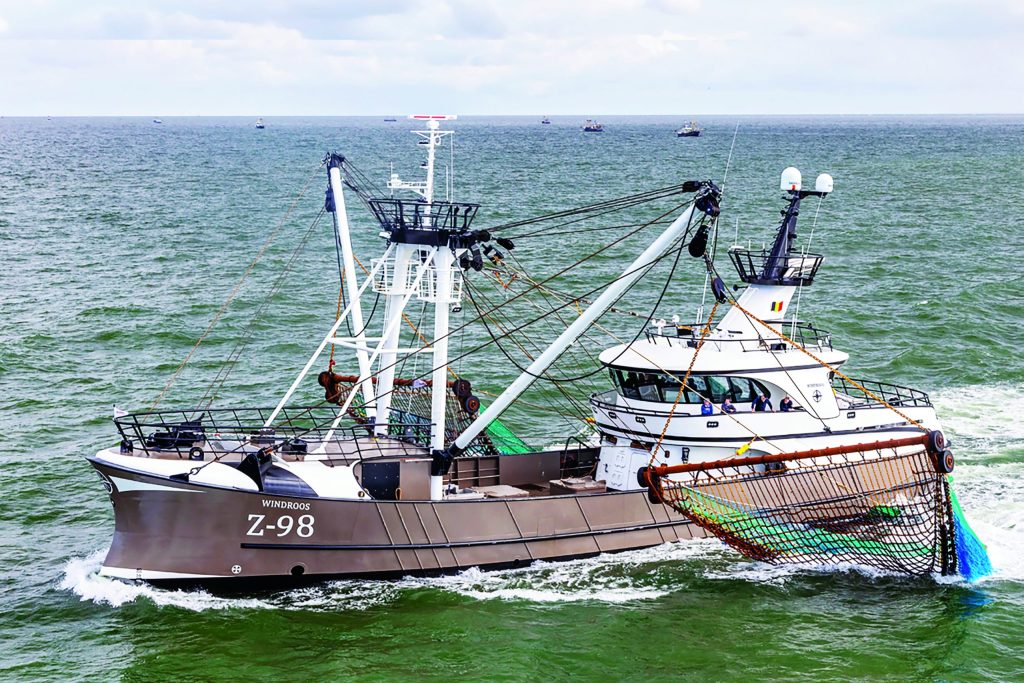
A sheltered inland waterway in the Netherlands was chosen for the sea trials due to its minimal tidal and weather variations, with Padmos volunteering the fishing tug Z-98 Windroos for the test. Freshly cleaned below the waterline, the vessel followed a GPS-mapped route while a range of onboard equipment from TechBinder recorded operational data such as navigational waypoints, engine performance metrics, shaft torque and fuel flow over a range of rpm intervals.
The vessel then returned to the dock, where it was pulled from the water and had Propspeed applied to its running gear. Once the coating had dried, it was sent back out to run the same route again, allowing A-B performance comparison while mitigating as many potential variables as possible.
When the data was collected, validated and the final figures tabulated, Propspeed delivered an average 4.5% reduction in fuel consumption across the operational rpm range.
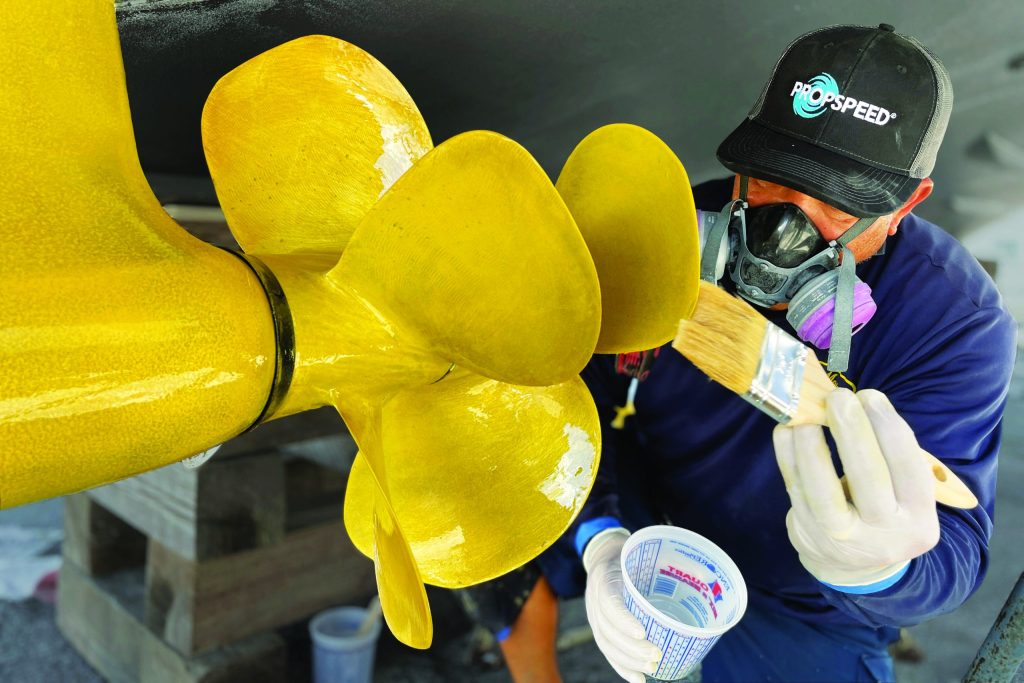
“The takeaway from this third-party study is that the application of Propspeed stands to reduce on average 4.5% of fuel burned and the correlated greenhouse gas emissions into the atmosphere, compared to a cleaned propeller,” says Hamilton. “Driven by new environmental regulations and shifts in consumer behaviour, boat builders in both the commercial and recreational sectors are looking for ways to make their vessels more fuel efficient and less impactful on the environment. We deliver a high-impact, low-investment solution that allows them to achieve that, right now, without retooling anything or having to change anything else.”
Sink the zincs
Most of us never give a second thought to sacrificial anodes – those curious knobs of raw metal found on outdrives, shafts, rudders and other metal components that dangle under the boat. Anodes protect underwater metals from corrosion by being more attractive to sub-surface electro-chemical reactions than anything else nearby. As a result, corrosive forces focus on the replaceable anode, rather than more valuable metal drive shafts, rudders and props. It’s kind of like catering a children’s birthday party by serving cake and broccoli at the same time – the cake gets devoured, while the broccoli escapes untouched.
Anodes have historically been made from zinc-based alloys. And while zinc is an effective anode material, when found in high concentrations – such as in the water around marinas – zinc has been linked to a variety of serious health concerns and shown to be highly toxic to a wide range of aquatic plants, invertebrates and fish.
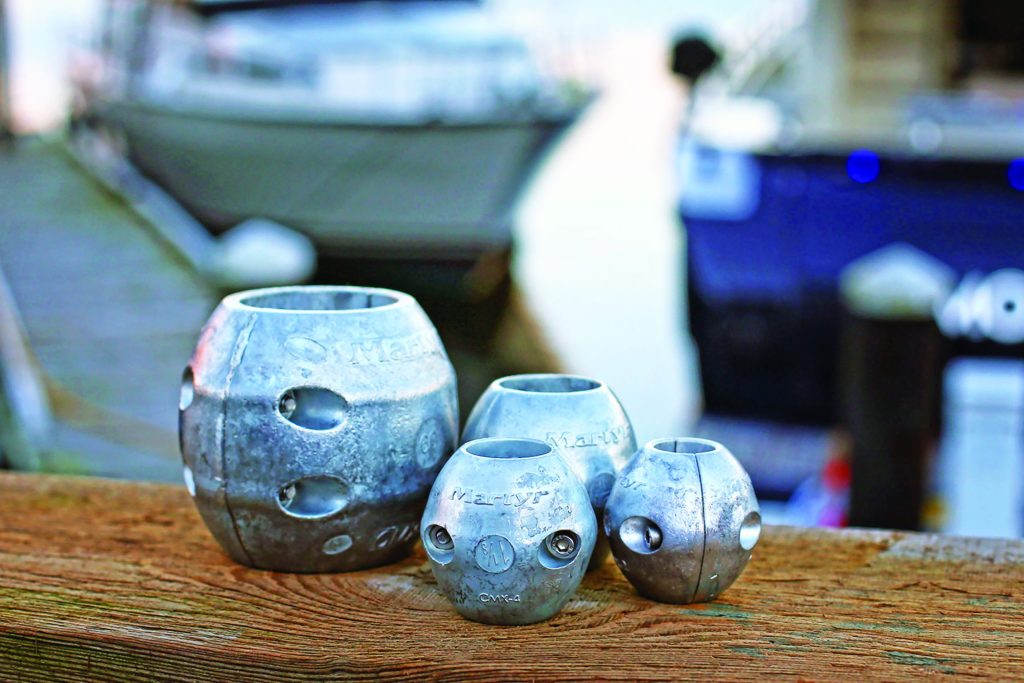
What’s worse, zinc anodes frequently contain additives like cadmium, an element that has been conclusively associated with serious illnesses, including kidney disease, atherosclerosis, hypertension, and cardiovascular diseases. In other words, not exactly the kind of stuff that’s in keeping with greater sustainability and a reduced ecological footprint.
More sustainable alternatives to zinc are still finding their way into widespread use. Anodes made from aluminium alloys are completely non-toxic and 100% cadmium-free and actually outperform zinc when it comes to protecting boats. “Most major engine manufacturers now include aluminium anodes on their products instead of zinc,” says Michael Szwez, senior VP of sales and marketing for Canadian anode manufacturer CMP Group. “Mercury, Suzuki, Yamaha and Volvo Penta have all embraced aluminium as an alternative to zinc.”
Further advantages to anodes made from aluminium alloy include significantly lighter weight for easier handling and lower shipping costs and greater durability in use, since aluminium anodes typically last up to 50% longer than zincs of comparable size.
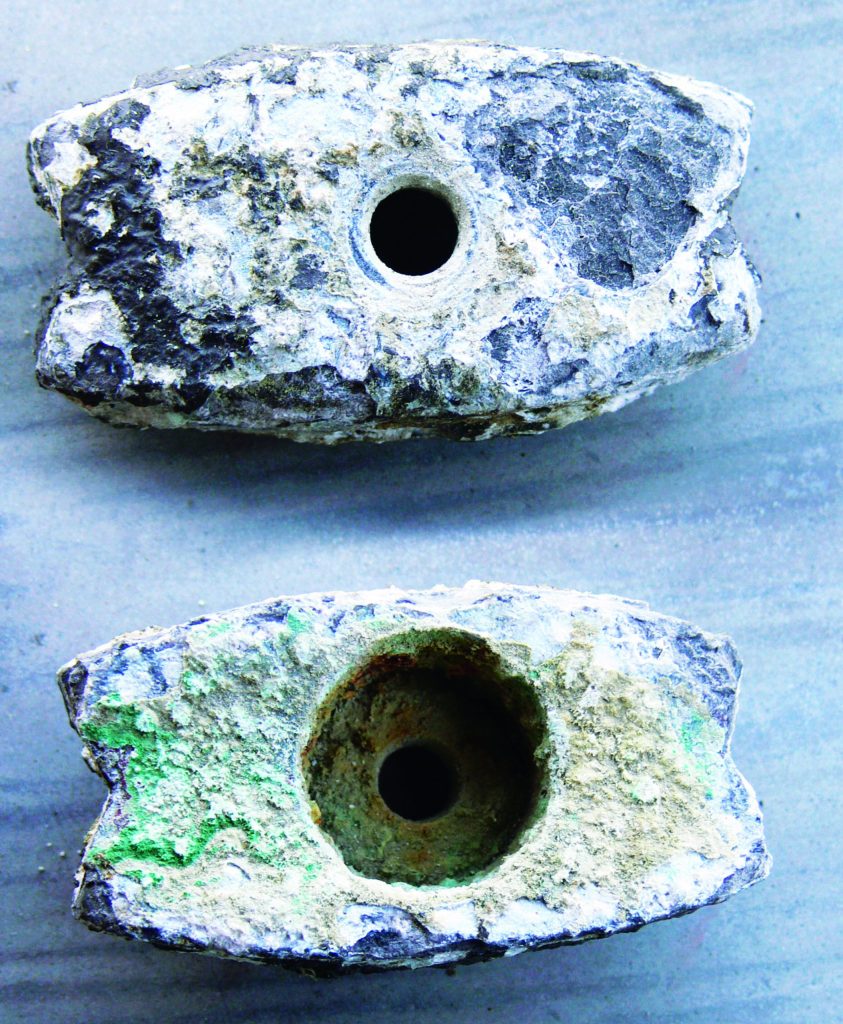
Szwez adds that boats operating exclusively in freshwater environments have an even better alternative available in the form of magnesium. With its extremely active electrochemical voltage range, magnesium-based anodes offer a substantial protection edge that surpasses that of zinc and even aluminium. “Nothing beats it,” says Szwez. “But we don’t recommend magnesium for use in saltwater because its electrochemical range is a bit too active, to the point where it dissolves so quickly that it could leave the hull temporarily unprotected if the owner doesn’t notice. In the ocean, the stuff dissolves like an antacid tablet. But in freshwater, magnesium is far and away the best protection you can get.”
Both aluminium and magnesium represent a more sustainable alternative to traditional zinc anodes and a positive step forward that any boatie can leverage right now.
Shelve the biocides
Anti-foul is a part of boating. But bottom paints can be nasty since they work by killing things that come into contact with them. A more sustainable option is to use coatings that don’t kill off marine growths so much as just make it impossible for them to get a grip.
That’s the thought behind non-toxic bottom paints like Hempel’s Silic One. Made from silicone and containing no biocides whatsoever, the stuff leaves the vessel with a super-slippery bottom that marine growths can’t adhere to, allowing water pressure alone to clean them off once the vessel begins moving at a speed of around five knots.
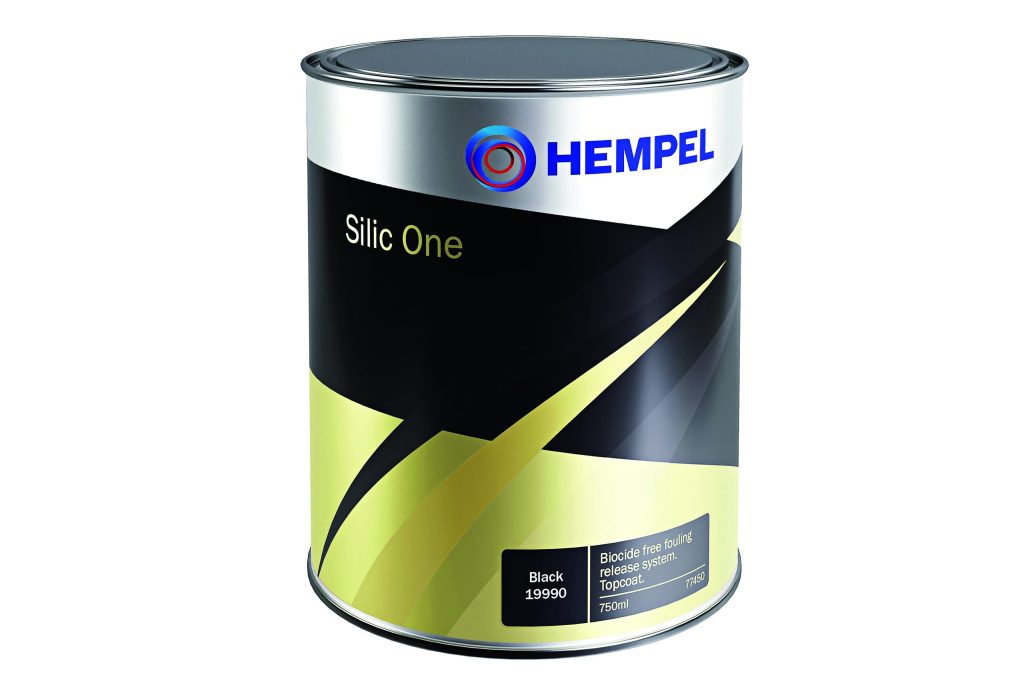
What’s more, the product creates an invisible hydrogel microlayer that forms between the coating surface and the water. Fouling organisms perceive this layer as liquid, according to the firm, discouraging them from even attempting to take hold to begin with.
“Silic One is a far more sustainable product in two ways,” explains Joe Graves, who distributes Hempel products through his company SeaWide Marine. “Obviously being biocide-free, it doesn’t leach any toxins into the environment, which is clearly a big win. Second, it’s very slick, so it reduces drag from the hull passing through the water. The benefit is that the boat uses less fuel and, as a result, emits fewer greenhouse gases. Our testing shows a 4% average gain in speed and a fuel economy improvement of approximately 7% when using the product. Over the course of a full year, that represents a significant reduction in the volume of GHG emissions going into the atmosphere.”
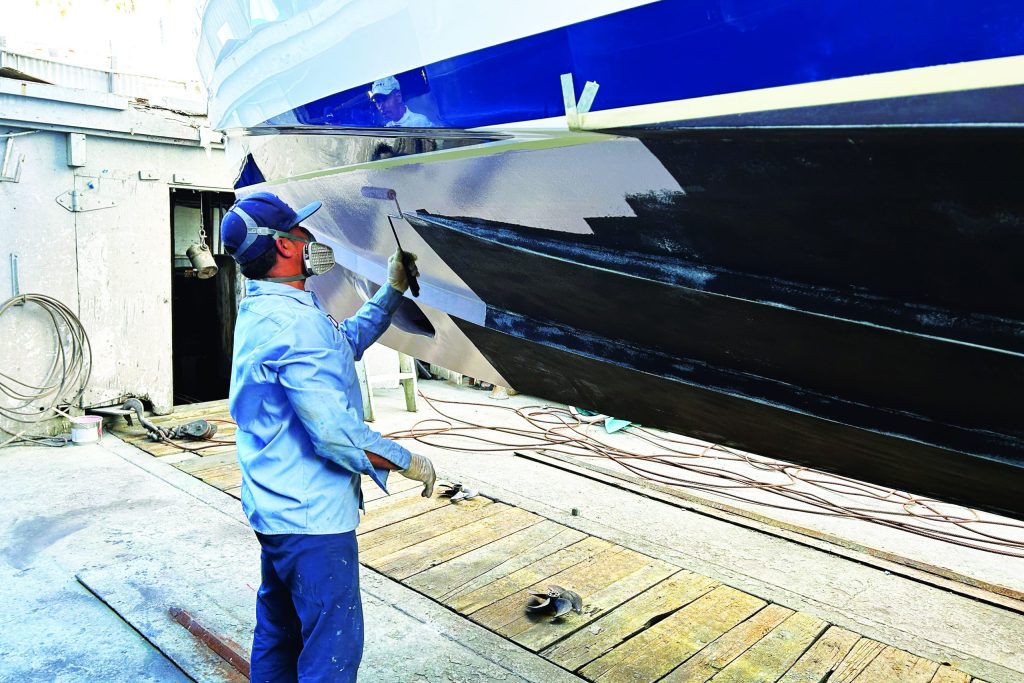
Graves adds that because Silic One doesn’t continually leach matter into the water like traditional bottom paints, the product offers a greater service life. “We say it’s a two-year paint,” he says. “After two years the boat is pulled out of the water, cleaned, and one coat of Silic One is applied to the hull. That process can be repeated five times before the hull needs to be stripped. It saves the end-user a lot of money, and it saves the boatyard in labour, since they can complete the work quickly. And it is biocide-free, so they’re not exposing their employees to toxins.”
Would you like fries with that?
One of the most interesting ways of reducing the environmental impact of boating could be as close by as your nearest fish and chip shop.
A groundbreaking study released by the International Council of Marine Industry Associations (ICOMIA) called Propelling Our Future says that boaties can immediately reduce our GHG emissions by a staggering 60% – today – by using sustainable fuels like hydrogenated vegetable oil in place of petrol or diesel.
Yes, we’re talking about used vegetable oil from deep fry vats. It’s sustainable since we grow all we need, and it’s plentiful since we dump billions of litres of the stuff into landfills every year. The used oil may have passed its prime for cooking food, but it’s still plenty good for powering a boat. And best of all, most existing marine engines will burn it with only minor mechanical adjustments or as-is, with no tuning required.
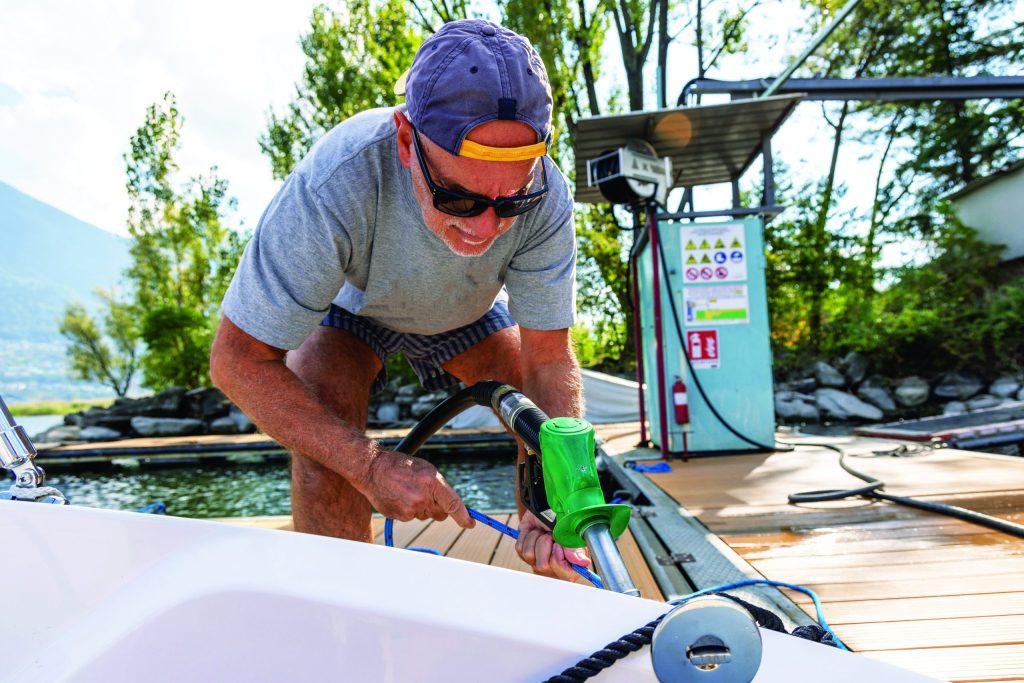
The study evaluated five different propulsion technologies – including full battery electric systems – against nine different types of boats to determine which tech had the lowest cradle-to-grave environmental impact. In every single category sustainable fuels used in place of petrol or diesel have the lowest full-life impact – except for personal watercraft, where battery electric systems won by a nose.
Presenting a displacement motorboat as an example, the study found the use of drop-in replaceable fuels delivered an immediate 40% reduction in GHG emissions. With an average annual utilisation of 48 hours and an average lifespan of 45 years, a hydrogen propulsion system in the same boat would require a 490% increase in usage to achieve the same cradle-to-grave environmental impact as sustainable fuels, while a battery-electric propulsion system would require a 595% increase in usage to achieve the same impact.
While ICOMIA concedes that sustainable fuels are not readily available in many areas, that situation will only change after end-users like us begin to ask for them and drive demand.
While it’s inspiring to think about future technologies and a day when all our activities will be completely carbon-neutral, there’s no need to wait – there’s plenty we can do right now to reduce our ecological impact. Every long journey really does begin with single steps, and the steps we take right now to make boating more sustainable can make a world of difference.








